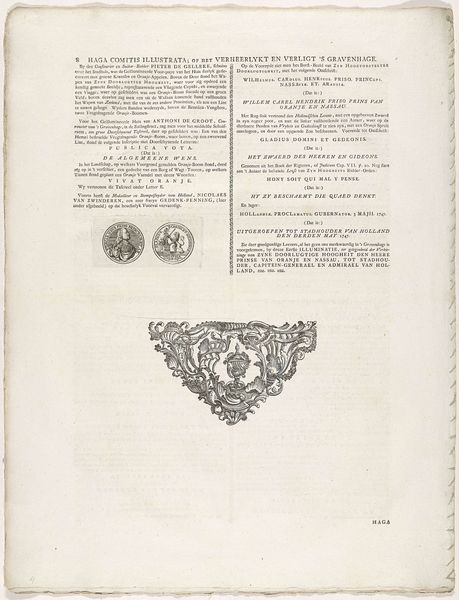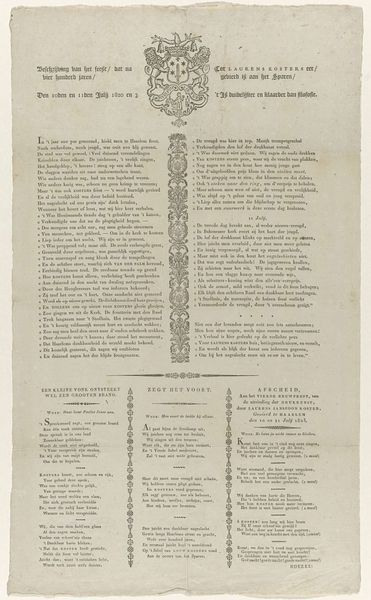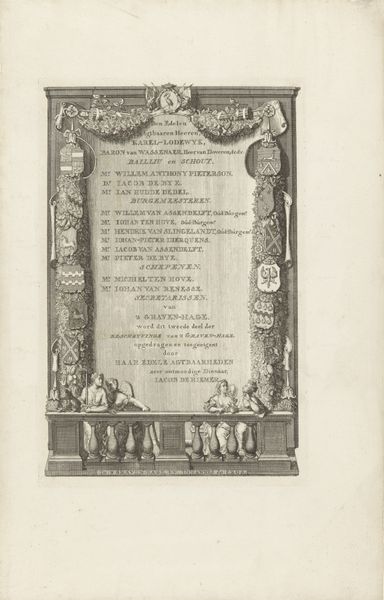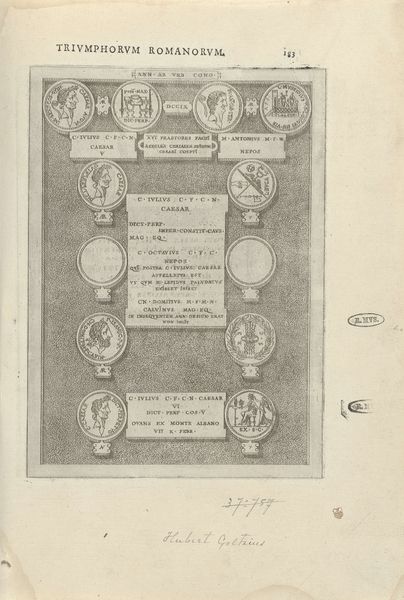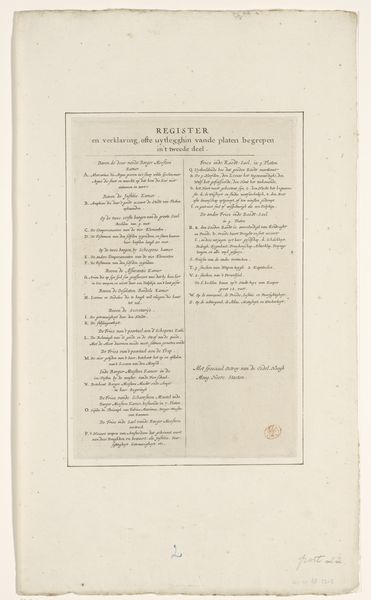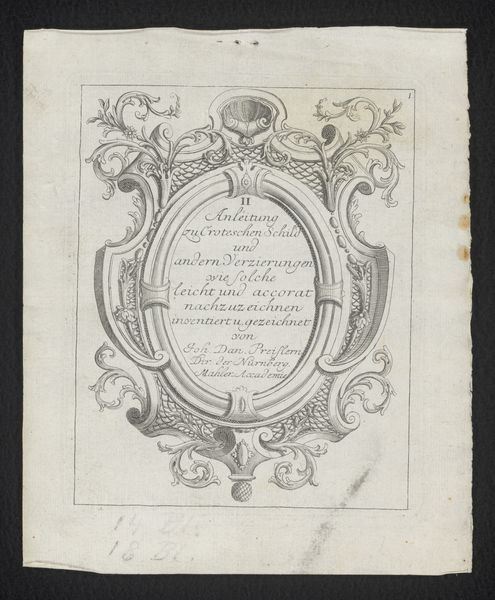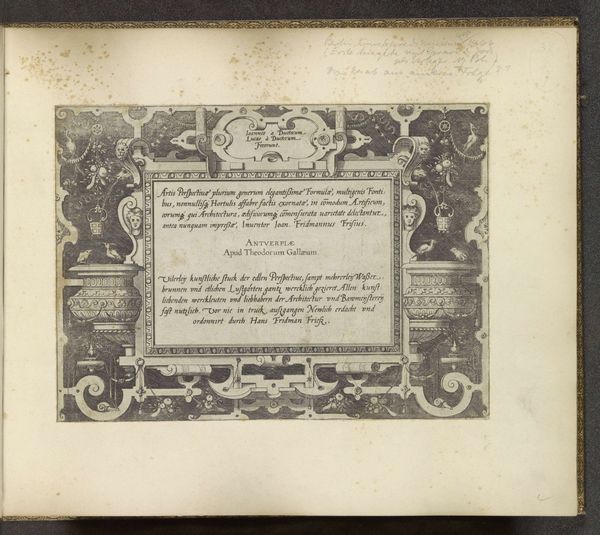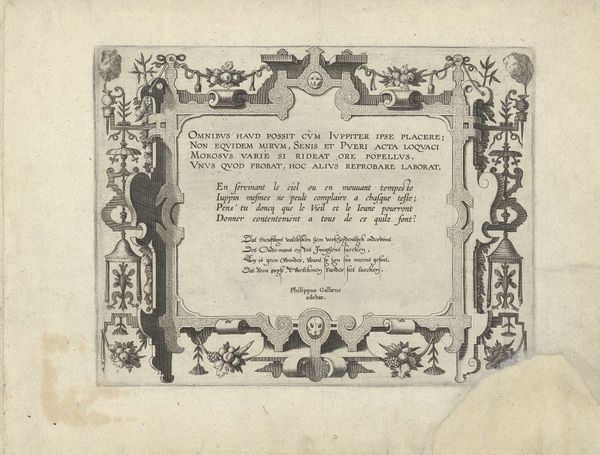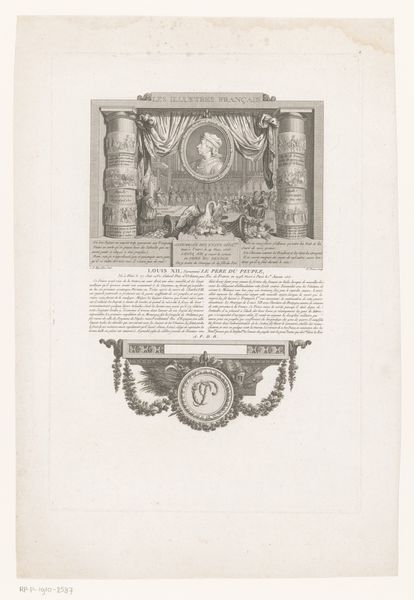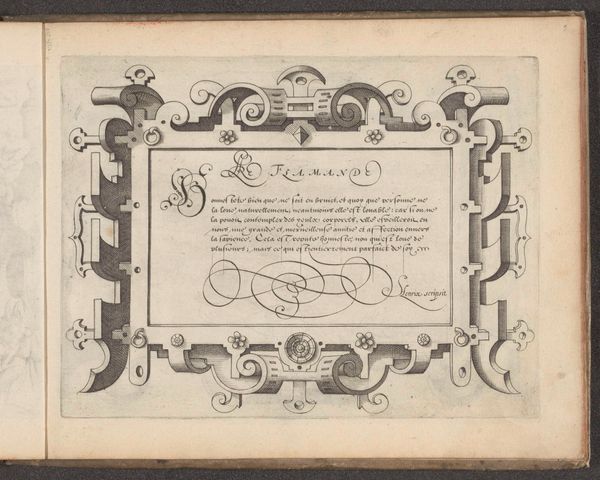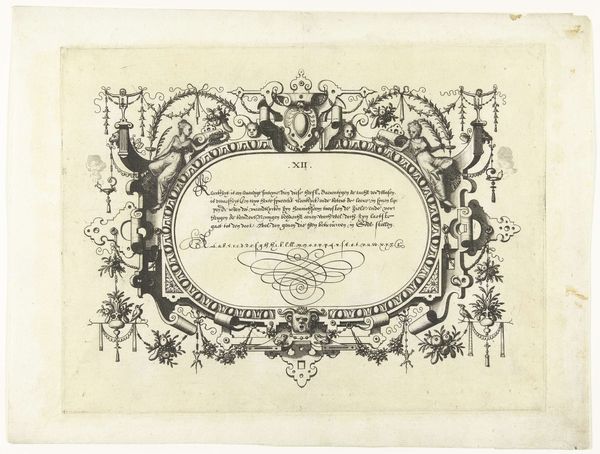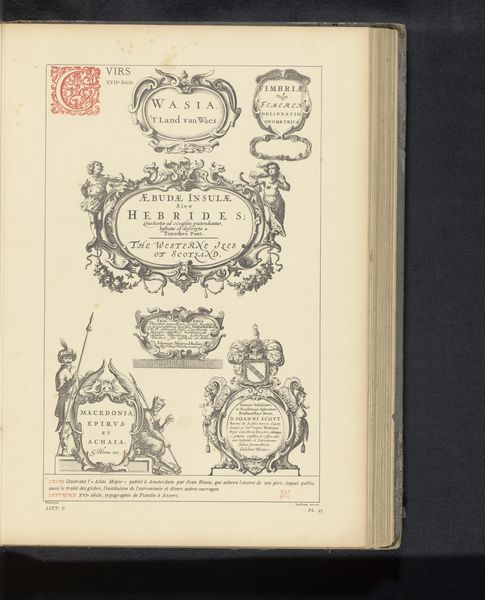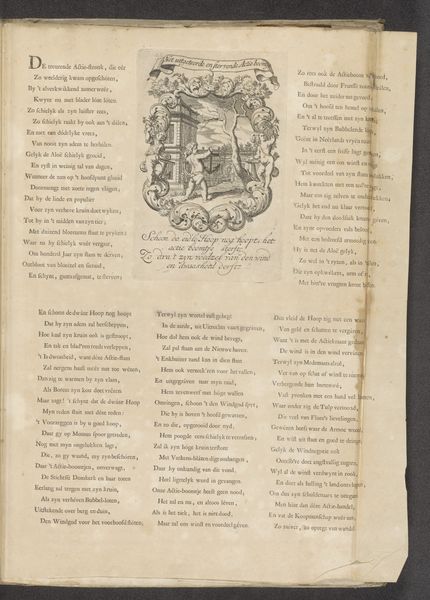
Laatste blad in: Haga comitis illustrata; of het verheerlykt en verligt 's Gravenhage, 's-Gravenhage 1751 1751
0:00
0:00
anonymous
Rijksmuseum
print, textile, engraving
#
baroque
# print
#
old engraving style
#
textile
#
personal sketchbook
#
history-painting
#
engraving
#
calligraphy
Dimensions: height 72 mm, width 148 mm, height 545 mm, width 420 mm
Copyright: Rijks Museum: Open Domain
Curator: Here, we're looking at "Laatste blad in: Haga comitis illustrata; of het verheerlykt en verligt 's Gravenhage, 's-Gravenhage 1751," an engraving from 1751, held at the Rijksmuseum. It's quite a piece of baroque artistry! Editor: My immediate feeling? Intricate, formal, and ever so slightly… overwhelming. There’s a lot going on visually, it seems very focused on civic pride. All those densely packed words! And it has such an official feel. Like a proclamation, almost. Curator: Exactly. Notice the layout. The calligraphy isn’t just decorative. Look at the text around those medallion portraits. These are strategic visual elements invoking legitimacy, linking power, prestige and history. The Baroque period loved this kind of display – power justified through visual rhetoric. Editor: Those medallions… One's a portrait, the other looks almost astronomical with lines pointing in different directions. There's some beautiful flourish along the bottom too. It does feel like looking at the foundations of a city’s identity, all laid out in careful script and symbol. Curator: The portrait likely symbolizes the ruling figure, drawing a direct line to leadership. And the sundial signifies time, progress, and perhaps even destiny—a visual language of order and prosperity. Consider this image functioning as civic theater, designed to communicate specific ideals. It attempts to cement a sense of shared identity and heritage. Editor: And the language itself! The text, even without fully understanding the old script, creates a sense of importance. Words have always had magic but with the typography alone, there's this undeniable sense of legacy, the power of the state to declare its own significance and hope to etch that image into the popular conciousness forever. Do you feel any irony thinking about our modern-day graphic design and its relationship with the state or brands and marketing in that regard? Curator: That is very astute; propaganda through graphics, that aims to permeate the zeitgeist and collective mind of citizens; there is little difference other than the techniques have adapted through technological progress. And, in this period in 1751 the artistry was as persuasive as ever! Editor: Thinking about all this makes me look at it differently; less chaotic now; more like a carefully constructed performance. All designed to project stability. Curator: A very carefully designed performance indeed. Visual emblems act as time capsules carrying loaded political ideas that still reverberate today. Editor: So it’s like looking into a mirror reflecting back to ourselves. Maybe less overwhelming and just… human after all.
Comments
No comments
Be the first to comment and join the conversation on the ultimate creative platform.
